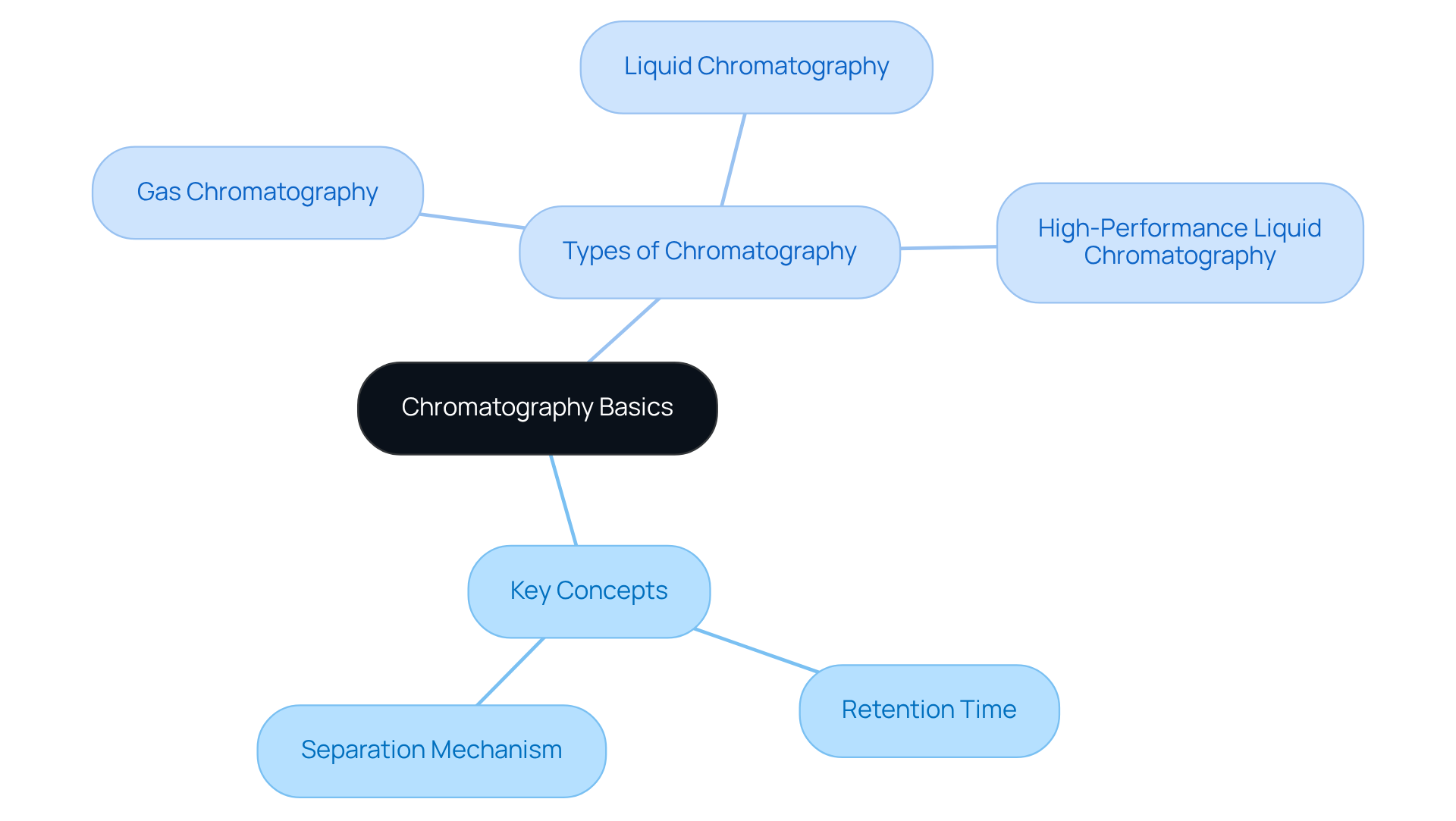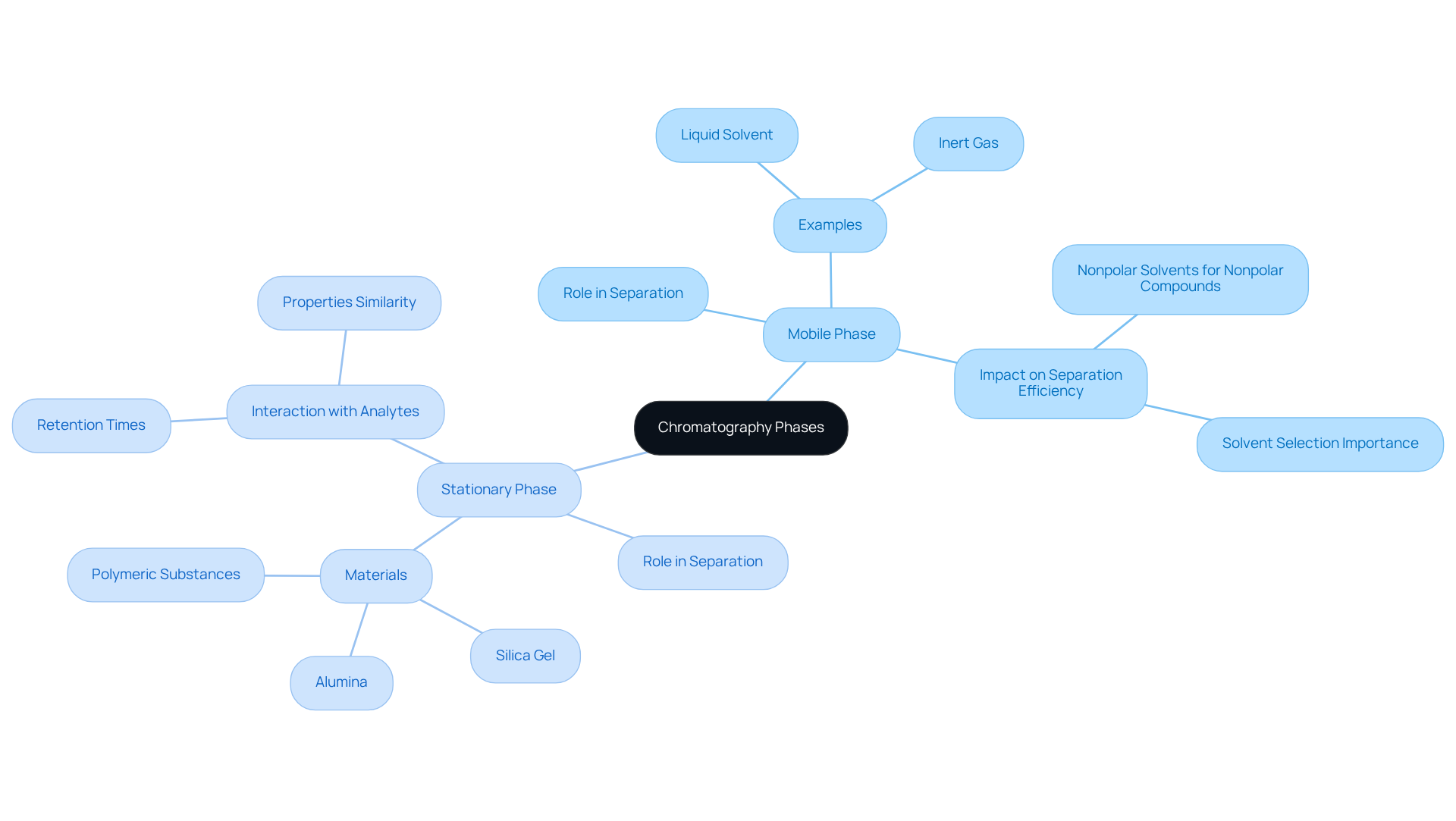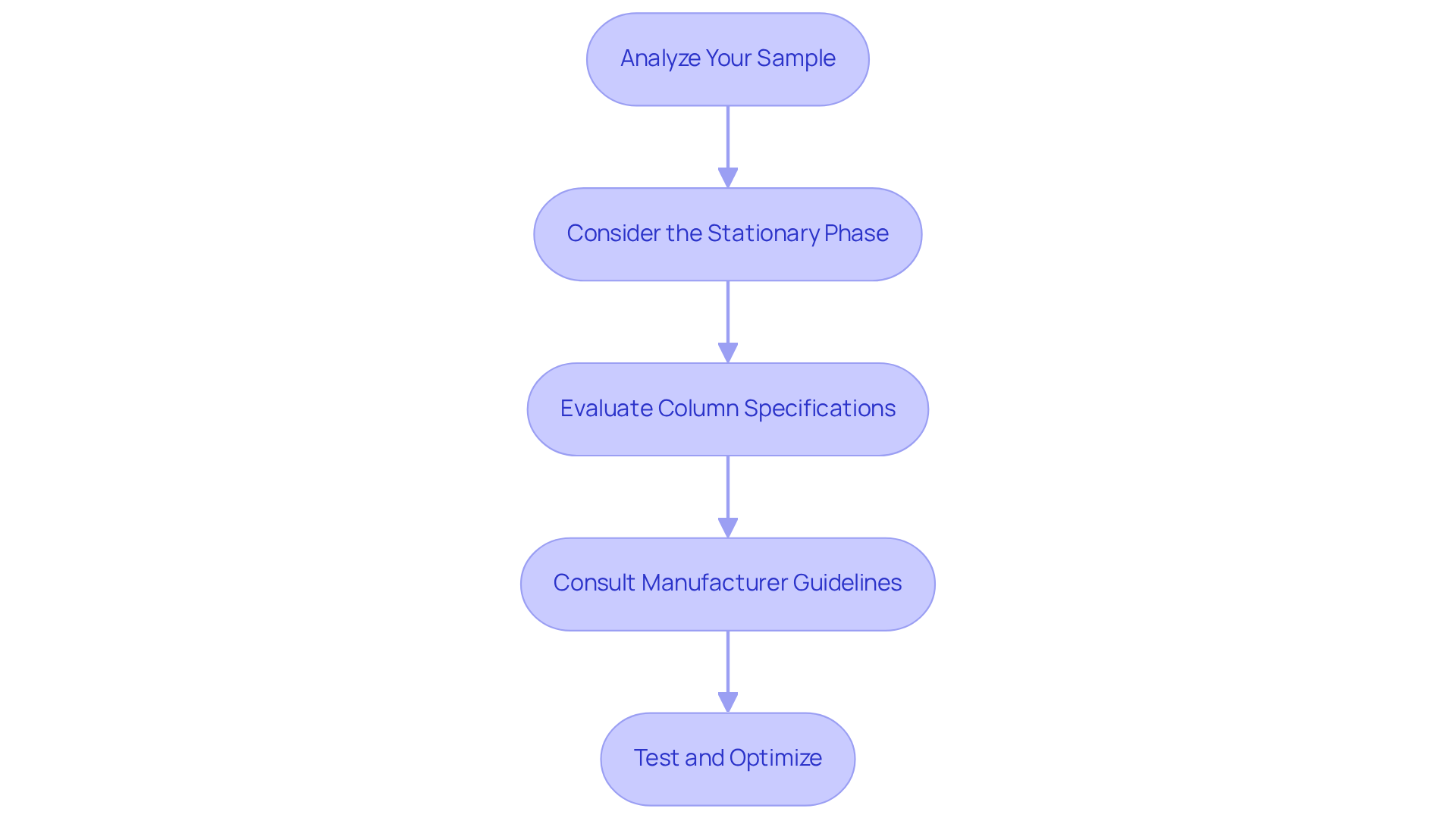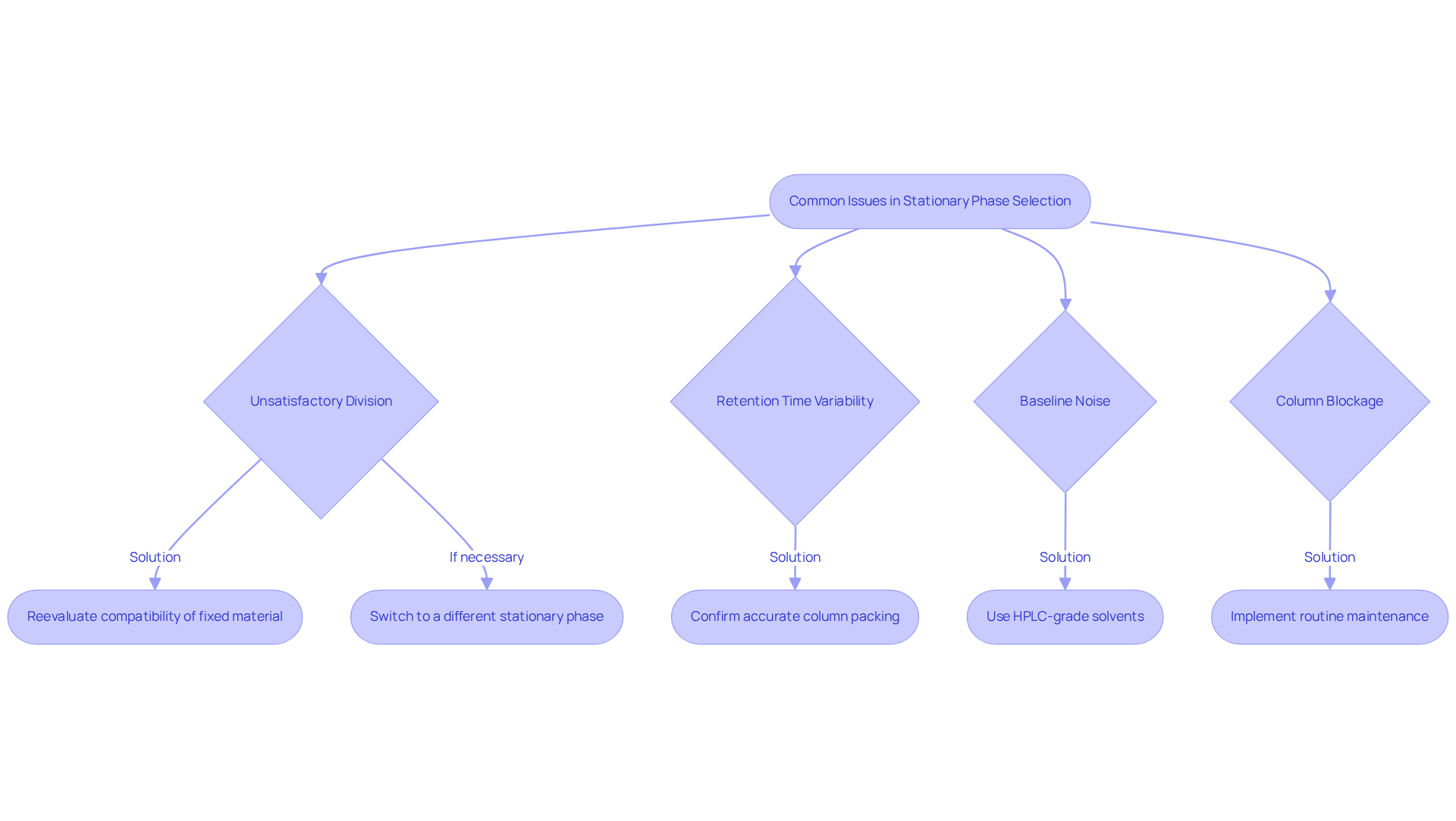Overview
The primary focus of "Master Column Chromatography Stationary Phase Selection" is to provide essential guidance on effectively selecting the appropriate stationary phase for column chromatography, thereby optimizing separation processes. This article delineates critical factors such as:
- The analysis of sample properties
- A thorough understanding of the roles of mobile and stationary phases
- Evaluation of column specifications
- Troubleshooting common issues
Each of these elements is vital for enhancing the efficiency and reliability of chromatographic results, underscoring the importance of high-quality scientific instruments in laboratory settings.
Introduction
Understanding the intricacies of column chromatography is essential for researchers and chemists, as it is a fundamental technique for separating complex mixtures. This guide explores the critical process of selecting the right stationary phase—a choice that profoundly influences the efficiency and clarity of analytical results.
With numerous options available, how can one effectively navigate the complexities of stationary phase selection to achieve optimal separation? Delving into this topic will not only enhance your understanding but also empower you to make informed decisions that elevate your research outcomes.
Understand Chromatography Basics
Chromatography is a sophisticated method utilized to isolate elements of a mixture based on their interactions with two distinct states: the fixed state and the moving state. The column chromatography stationary phase is typically a solid or a liquid adhered to a solid, whereas the mobile phase is a liquid or gas that traverses through this stationary phase. This division occurs because different components of the mixture interact variably with these states, leading to varying retention times. A comprehensive understanding of these interactions is essential for optimizing separation processes in analytical chemistry.
Key concepts include:
- Retention Time: This refers to the duration a compound remains in the column before detection.
- Separation Mechanism: This is the process through which various components are segregated according to their affinities to the column chromatography stationary phase and the mobile substances.
- Types of Chromatography: It is important to familiarize yourself with various types, including gas chromatography (GC), liquid chromatography (LC), and high-performance liquid chromatography (HPLC). Each category serves distinct purposes and has specific criteria for selecting the appropriate support material.

Differentiate Between Mobile and Stationary Phases
In chromatography, understanding the roles of the mobile phase and the column chromatography stationary phase is essential for effective separation. The mobile component, which can be either a solvent or gas, is responsible for transporting the sample through the column chromatography stationary phase, where the stationary phase is the material that remains within the column. Recognizing these distinctions is crucial for optimizing chromatographic processes.
The mobile component plays a vital role in the separation process. This stage can be a liquid or gas, and its selection significantly influences the efficiency of the separation and the clarity of the results. For example, nonpolar solvents are particularly effective for extracting nonpolar substances, such as cannabinoids, enhancing their distinction from other elements. Moreover, the separation of THC and CBD requires a small pore size to ensure effective separation, making the choice of mobile phase composition critical.
On the other hand, the stationary phase interacts with the analytes, impacting their retention times. Common support materials include:
- Silica gel
- Alumina
- Various polymeric substances
The choice of support medium is determined by the chemical properties of the analytes and the desired characteristics of the separation. Analytes that possess characteristics similar to the stationary phase tend to remain in the column longer, whereas those that align more closely with the mobile phase elute more quickly.
Grasping these distinctions empowers informed decisions regarding the optimal column chromatography stationary phase for specific analytical needs, ultimately enhancing the efficiency and effectiveness of chromatographic techniques. It is also critical to emphasize that the choice of solvent is pivotal and varies based on the specific molecules being separated, as certain solvents exhibit greater efficiency with particular materials.

Select the Appropriate Stationary Phase for Your Application
Choosing the appropriate column chromatography stationary phase is crucial for achieving optimal distinction in chromatography. To guide your selection, consider the following essential factors:
- Analyze Your Sample: Start by evaluating the chemical properties of your analytes, including polarity, size, and functional groups. Understanding these characteristics is vital for selecting a suitable fixed medium, specifically a column chromatography stationary phase, that enhances differentiation efficiency.
- Consider the column chromatography stationary phase: Different techniques are utilized by various stationary phases, including normal phase and reversed phase chromatography. Ensure your choice aligns with the specific separation objectives of your analysis to guarantee effective outcomes.
- Evaluate Column Specifications: Important specifications like pore size, surface area, and particle size significantly influence the efficiency and resolution of your separation. For example, larger target molecules require larger pore sizes, while smaller molecules benefit from smaller pores for better access and resolution. It's critical to recognize that using incorrect pore sizes in the column chromatography stationary phase can lead to reduced resolution and peak broadening.
- Consult Manufacturer Guidelines: Utilize the expertise of manufacturers, such as JM Science Inc., by reviewing their product specifications and recommendations. This ensures that the selected column chromatography stationary phase meets your analytical requirements and enhances the reliability of your results.
- Test and Optimize: Once you have chosen a fixed stage, conduct initial assessments to evaluate its effectiveness. Be prepared to adjust conditions, such as pH and solvent composition, to improve outcomes. For instance, maintaining the mobile phase pH between 8-9 can prevent silica gel degradation, ensuring the durability and efficiency of the fixed layer.
By following these guidelines, you can enhance the efficiency of your chromatographic processes, leading to more accurate and reliable analytical results.

Troubleshoot Common Issues in Stationary Phase Selection
When selecting a column chromatography stationary phase, several common issues may arise that can significantly impact your chromatography results.
-
Unsatisfactory Division: If the division is inadequate, it is crucial to reevaluate the compatibility of the fixed material with your analytes. Consider the polarity and functional groups of both the fixed and mobile phases in the column chromatography stationary phase to ensure they align with your separation objectives.
-
Retention Time Variability: Inconsistent retention times often indicate problems with column packing or the stability of the phases. Confirm that the column is packed accurately and that the fixed substance remains consistent under your specific operating conditions. Regular maintenance and proper equilibration can help mitigate these issues. A good rule of thumb is to replace consumables like frits, filters, and tubing on a regular schedule to prevent complications.
-
Baseline Noise: Increased baseline noise may stem from contaminants in the flowing medium or issues with the fixed medium itself. Utilize HPLC-grade solvents and ensure that the support medium is thoroughly cleaned and prepared before use to minimize noise. Many problems arise from minor, avoidable oversights, such as contaminated mobile solutions.
-
Column Blockage: Pressure spikes or flow issues can signal blockages within the column. Implement routine maintenance and adhere to proper sample preparation protocols to prevent clogging and ensure smooth operation.
Incompatibility with analytes may necessitate switching to a different column chromatography stationary phase that better aligns with their chemical properties if analytes are not retained as expected. This adjustment can significantly enhance retention and separation efficiency.
By recognizing these potential challenges and applying effective solutions, you can improve your chromatography outcomes and maintain optimal laboratory performance. HPLC troubleshooting does not need to be overwhelming; with a structured approach, most issues are solvable.

Conclusion
Mastering the selection of a column chromatography stationary phase is essential for achieving precise and reliable analytical results. The effectiveness of chromatography hinges on understanding the intricate relationship between the stationary and mobile phases, as well as the specific characteristics of the analytes being separated. This knowledge empowers practitioners to make informed choices that enhance the efficiency of their separation processes.
Key insights from the article highlight the importance of:
- Analyzing sample properties
- Understanding the roles of different stationary phases
- Adhering to manufacturer guidelines
Additionally, troubleshooting common issues such as:
- Unsatisfactory separation
- Retention time variability
can significantly improve outcomes. By systematically evaluating these factors, one can optimize chromatographic techniques to achieve superior results.
Ultimately, the art of selecting the right stationary phase is not merely a technical task but a critical component of successful chromatography. Embracing a structured approach to phase selection and being proactive in troubleshooting can lead to breakthroughs in analytical chemistry. This mastery not only enhances the quality of results but also contributes to the advancement of research and industry practices. Take the time to refine these skills, and elevate your chromatography expertise to new heights.




